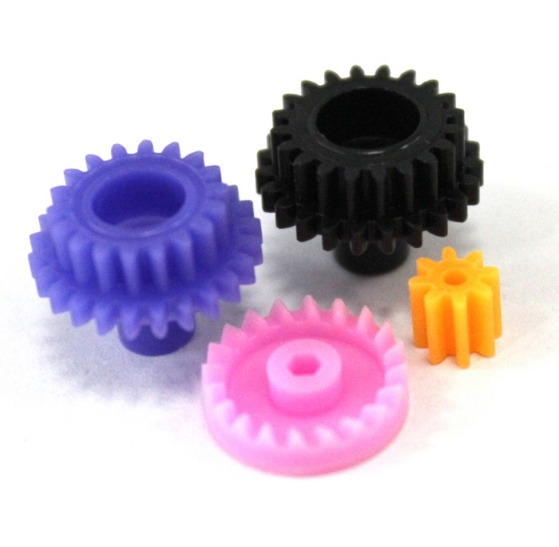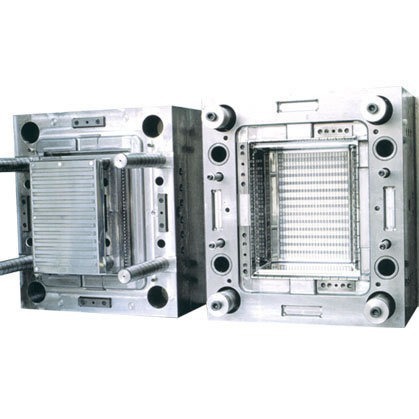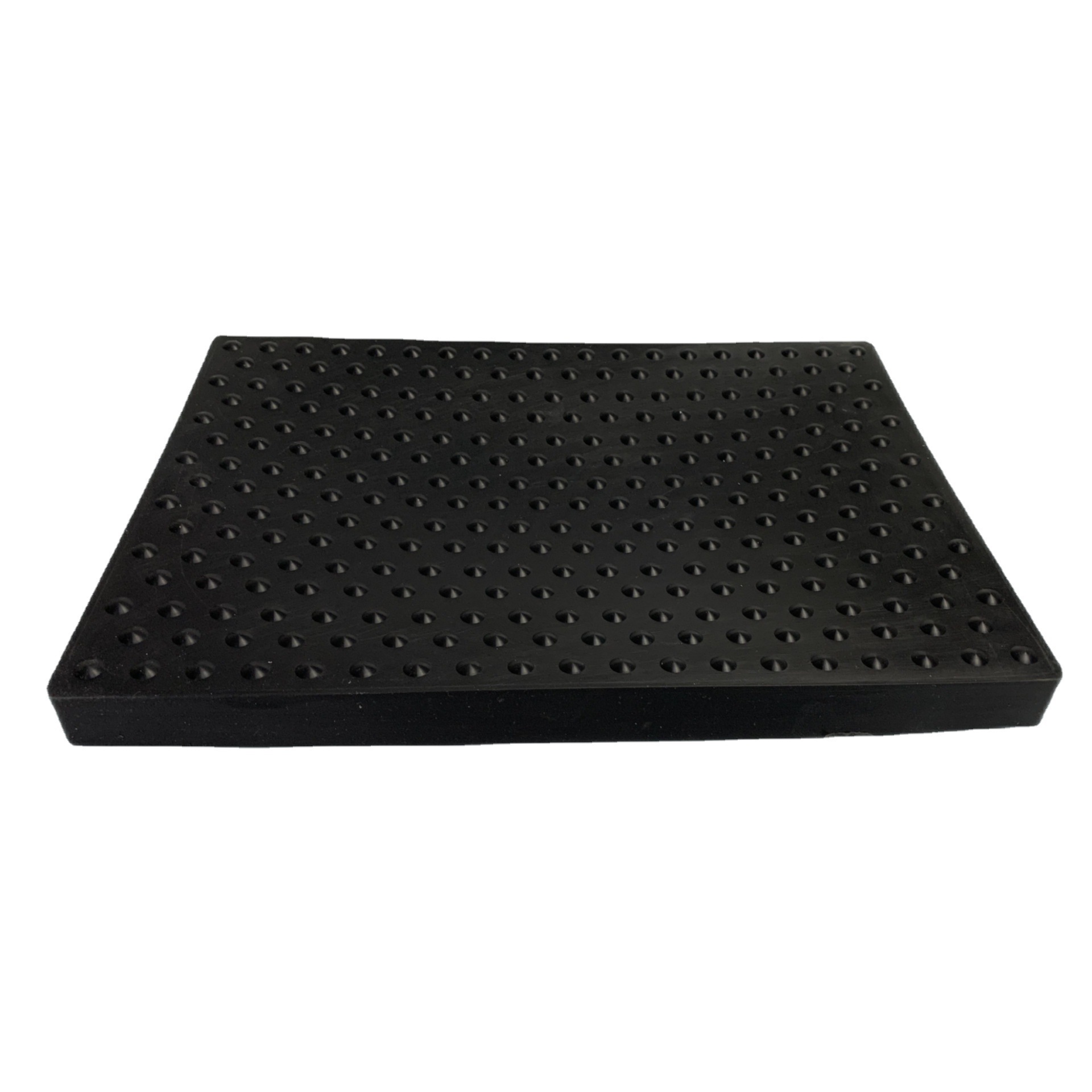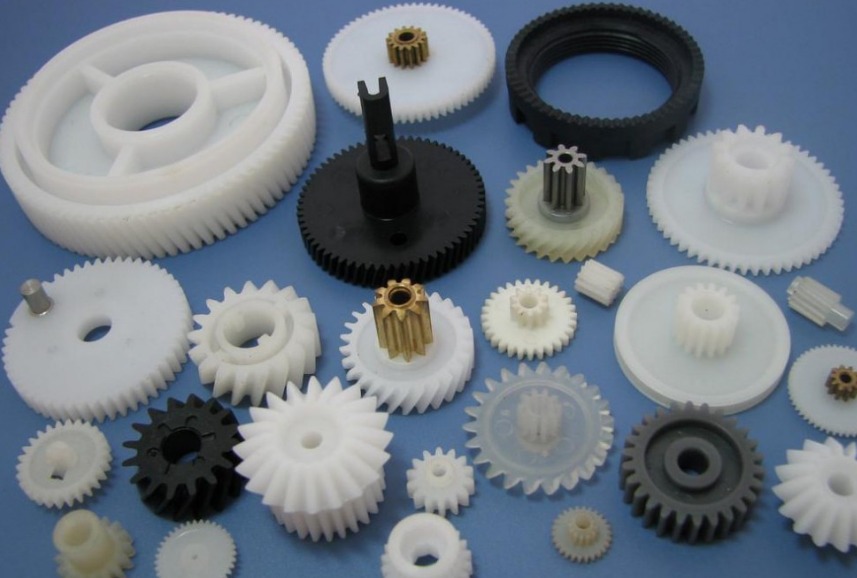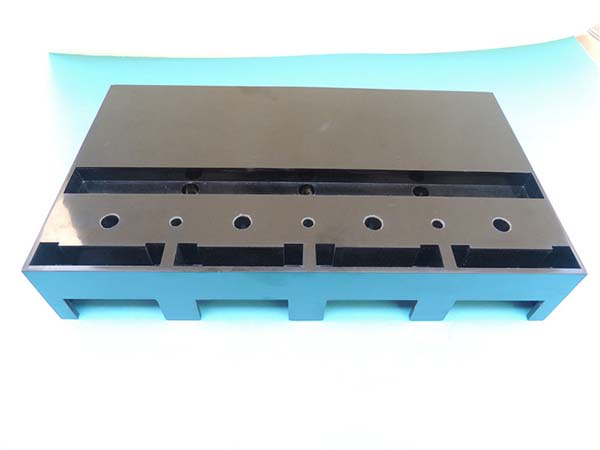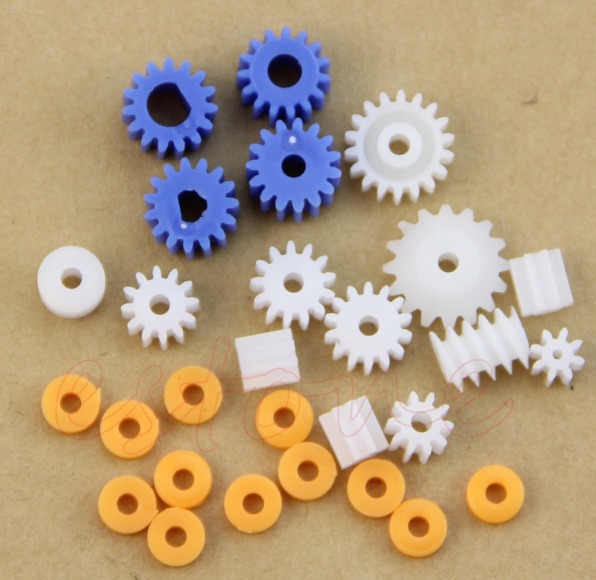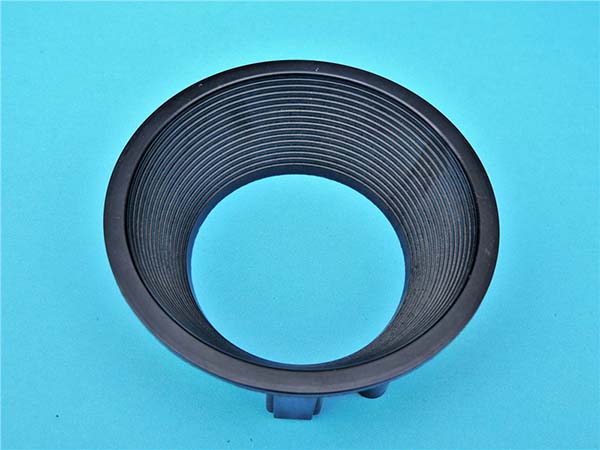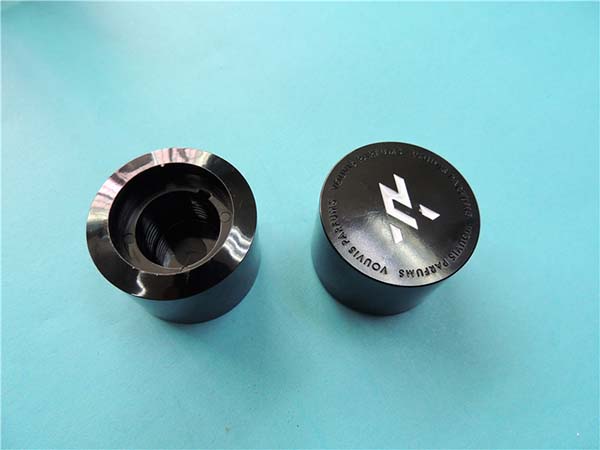Introduction
What are Big Plastic Gears?
Big plastic gears, as the name implies, are relatively large - sized gears made from plastic materials. These gears play a crucial role in various industrial applications. In the automotive industry, they can be found in components such as windshield wiper mechanisms, where they help in the smooth and consistent movement of the wipers. They are also used in some power window systems, providing the necessary mechanical advantage to lift and lower the windows.
In mechanical manufacturing, big plastic gears are applied in conveyor systems. They transfer power and motion, enabling the transportation of goods along the conveyor belt. For example, in a factory that produces consumer goods, the conveyor system's smooth operation depends on the reliable performance of these plastic gears. Additionally, they are used in certain types of industrial machinery, like packaging machines, where they contribute to the precise movement and synchronization of different parts during the packaging process.
Importance of Material Selection
The material chosen for big plastic gears is of utmost importance as it directly impacts multiple aspects of their performance. Durability is one key factor. A durable material ensures that the gear can withstand continuous use over an extended period without significant wear and tear. For instance, in a high - volume production line where the conveyor system runs 24/7, the plastic gears need to be durable to avoid frequent replacements, which could lead to production downtime and increased costs.
Strength is another vital aspect. The gear must have sufficient strength to transmit the required torque without breaking or deforming under load. In applications such as heavy - duty machinery, where high forces are involved, the strength of the plastic gear material determines whether the gear can function effectively. A gear made from a weak material may crack or shatter when subjected to high torque, causing equipment failure.
Noise reduction is also an advantage provided by the right material. In applications where noise levels need to be kept low, such as in household appliances or office equipment, certain plastic materials can reduce the noise generated during gear operation. This not only improves the user experience but also makes the equipment more suitable for use in noise - sensitive environments.
Moreover, material selection affects chemical resistance. If the gear is used in an environment where it may come into contact with chemicals, the material should be resistant to those substances to prevent degradation and maintain its performance. For example, in a chemical processing plant, the plastic gears in pumps or agitators need to resist the corrosive effects of the chemicals being processed.
Key Factors Affecting Big Plastic Gears Performance
Load and Stress Resistance
When big plastic gears are in operation, they are subjected to various loads and stresses. Loads can include the weight of the components they are moving, the forces exerted during the transfer of power, and any external forces acting on the system. For example, in a conveyor system, the plastic gears need to carry the weight of the goods being transported along with the friction forces generated during movement. Stresses such as shear stress, bending stress, and contact stress are also present. Shear stress occurs when the teeth of the gear are pushed in opposite directions parallel to the surface. Bending stress acts on the tooth roots as the teeth are loaded, and contact stress is generated at the points where the teeth of two meshing gears come into contact.
Different plastic materials have varying abilities to resist these loads and stresses. Materials like polyoxymethylene (POM) are known for their high mechanical strength and rigidity. POM can withstand relatively high loads and stresses without significant deformation or failure. In contrast, some general - purpose plastics such as polyethylene (PE) have lower strength and are more suitable for applications with lighter loads. A study showed that POM gears could handle a maximum load of 500 N in a specific test setup before showing signs of failure, while PE gears started to deform at around 100 N under the same conditions. This demonstrates the importance of choosing the right material based on the expected load and stress levels in the application.
Wear and Friction
Wear and friction are critical factors that significantly impact the lifespan and efficiency of big plastic gears. Wear is the gradual removal of material from the surface of the gear teeth over time. It can occur due to the repeated contact and relative motion between the teeth of meshing gears. As the gear teeth wear, the shape of the teeth changes, which can lead to inaccurate gear meshing, increased noise, and eventually, gear failure. Friction between the gear teeth not only contributes to wear but also results in energy losses. Higher friction means more energy is wasted in the form of heat, reducing the overall efficiency of the gear system.
The choice of plastic material plays a crucial role in determining the wear and friction characteristics of the gears. Materials with low friction coefficients, such as PTFE (polytetrafluoroethylene) - filled plastics, are highly desirable for reducing friction. PTFE has an extremely low coefficient of friction, which helps to minimize the energy losses and wear rate. For instance, a comparison between a standard nylon gear and a nylon gear filled with PTFE showed that the PTFE - filled nylon gear had a 30% lower wear rate after 1000 hours of operation in a typical gear - testing rig. Additionally, some materials have self - lubricating properties, which further reduce the need for external lubrication and can improve the long - term performance of the gears in terms of wear resistance.
Temperature Resistance
Temperature changes can have a profound impact on the performance of big plastic gears. High temperatures can cause the plastic material to soften, lose its mechanical properties, and even deform. On the other hand, low temperatures can make the plastic brittle, increasing the risk of cracking and failure. In applications where the gear operates in an environment with wide temperature variations, such as in automotive engines or industrial ovens, the temperature resistance of the plastic material becomes a key consideration.
Different plastic materials have different temperature resistance capabilities. For example, polyetheretherketone (PEEK) is a high - performance engineering plastic with excellent heat resistance. It can maintain its mechanical properties at temperatures up to 250°C, making it suitable for applications in high - temperature environments. In contrast, materials like polypropylene (PP) have a lower heat - deflection temperature. PP may start to soften at around 100°C, limiting its use in applications where high - temperature resistance is required. A research experiment found that a PEEK - made gear could operate smoothly for 1000 hours at 200°C, while a PP - made gear deformed and failed within 100 hours at the same temperature. This clearly shows the importance of selecting a material with appropriate temperature resistance for the specific operating conditions of the big plastic gears.
Types of Materials for Big Plastic Gears
Engineering Plastics
Nylon
Nylon, also known as polyamide (PA), is a popular choice for big plastic gears due to its excellent properties. It has high strength, which allows it to withstand significant mechanical loads. In a conveyor system in a food processing factory, nylon gears are used to transfer power between different rollers. Despite the continuous operation and the weight of the conveyed food products, these nylon gears can maintain their structural integrity for a long time.
Nylon also exhibits good wear resistance. The presence of amide groups in its molecular structure contributes to its self - lubricating properties, reducing friction between the gear teeth. This makes it suitable for applications where lubrication is difficult or where low - friction operation is required. For example, in some small - scale industrial machinery that operates in dusty environments, nylon gears can work smoothly without frequent lubrication, reducing maintenance costs.
Moreover, nylon has a relatively high melting point, enabling it to perform well in applications with moderate temperature requirements. It can resist temperatures up to around 150°C in some cases, depending on the specific type of nylon. In automotive applications, such as in the blower systems of air - conditioning units, nylon gears can handle the heat generated during operation without significant degradation of their mechanical properties.
Polycarbonate
Polycarbonate (PC) is another widely used engineering plastic for big plastic gears. One of its most notable advantages is its high impact strength. PC can absorb a large amount of energy during impact, making it suitable for applications where the gear may be subject to sudden shocks. In power tools, for instance, the gears are often exposed to impact forces during startup and operation. PC gears can withstand these impacts without cracking or breaking, ensuring the reliable operation of the power tool.
PC also offers excellent dimensional stability. It has a low coefficient of thermal expansion, which means that its dimensions change very little with temperature variations. This property is crucial for gears, as accurate gear meshing depends on consistent dimensions. In precision instruments, such as high - end optical equipment, PC gears are used to ensure precise movement and positioning. The dimensional stability of PC gears allows for smooth and accurate operation, maintaining the performance of the instrument over time.
In addition, PC is highly transparent, which can be an advantage in some applications. For example, in certain types of display mechanisms, transparent PC gears can be used to transfer motion while still allowing for visual access to other components. This transparency also makes it possible to use PC gears in applications where the gear operation needs to be visually monitored.
Thermoplastic Elastomers (TPEs)
General Introduction of TPEs
Thermoplastic elastomers (TPEs) are a unique class of materials that combine the properties of both plastics and rubbers. They can be processed like thermoplastics, which means they can be melted and molded using common plastic - processing techniques such as injection molding, extrusion, and blow molding. This makes them highly versatile in manufacturing, as they can be easily formed into complex shapes with high precision.
At the same time, TPEs exhibit rubber - like elasticity at room temperature. They can be stretched and deformed under stress and then return to their original shape when the stress is removed. This elasticity allows TPE - made gears to absorb vibrations and shocks during operation, reducing noise and wear. In applications where smooth and quiet operation is essential, such as in household appliances, TPE gears can provide a more pleasant user experience.
Specific TPEs for Gears
There are several types of TPEs that are particularly suitable for big plastic gears. One example is thermoplastic polyurethane (TPU). TPU has a high tensile strength and excellent abrasion resistance. It can withstand repeated bending and stretching without significant degradation. In industrial conveyor belts, TPU gears are used to drive the movement of the belt. The high strength and abrasion resistance of TPU ensure that the gears can handle the continuous operation and the friction generated by the belt, resulting in a long - lasting and reliable performance.
Another type is thermoplastic vulcanizate (TPV). TPV offers good chemical resistance, which makes it suitable for applications where the gear may come into contact with various chemicals. In chemical processing plants, for example, TPV gears can be used in pumps or agitators. They can resist the corrosive effects of chemicals such as acids and alkalis, maintaining their mechanical properties and functionality over time.
The performance of these TPEs can vary depending on the working environment. In high - temperature environments, some TPEs may start to lose their elasticity and mechanical strength. However, there are heat - resistant grades of TPEs available that can operate at elevated temperatures. In low - temperature environments, the flexibility of TPEs may be reduced, but certain TPE formulations are designed to maintain their rubber - like properties even at very low temperatures, making them suitable for applications in cold storage facilities or Arctic - based equipment.
Composites
Fiber - Reinforced Composites
Fiber - reinforced composites are made by combining a polymer matrix with reinforcing fibers, such as glass fiber, carbon fiber, or aramid fiber. These fibers significantly enhance the performance of the composite material for big plastic gears. Glass - fiber - reinforced composites, for example, offer increased strength and stiffness. The glass fibers act as a reinforcement, carrying a significant portion of the load applied to the gear. In a large - scale industrial gearbox, glass - fiber - reinforced plastic gears can transmit higher torque compared to non - reinforced plastic gears, making them suitable for heavy - duty applications.
Carbon - fiber - reinforced composites provide even higher strength - to - weight ratios. Carbon fibers are extremely strong and lightweight, which makes the composite material very rigid and durable. In aerospace applications, where weight reduction is crucial, carbon - fiber - reinforced plastic gears are used in various mechanical systems. They can withstand the high - stress conditions in aircraft engines or control mechanisms while keeping the overall weight of the component low.
Aramid - fiber - reinforced composites, on the other hand, are known for their high impact resistance. Aramid fibers, such as Kevlar, have excellent energy - absorbing properties. In applications where the gear may be subject to sudden impacts or vibrations, such as in construction machinery, aramid - fiber - reinforced plastic gears can protect the equipment from damage by effectively absorbing the impact energy.
Particle - Filled Composites
Particle - filled composites involve adding particles, such as calcium carbonate, talc, or mica, to the polymer matrix. These particles can improve the performance of the gear in several ways. For example, calcium carbonate - filled composites can enhance the stiffness of the plastic gear. In a printing press, the gears need to be stiff to ensure accurate movement and alignment of the printing plates. Calcium carbonate - filled plastic gears can meet this requirement, providing stable operation and high - quality printing results.
Talc - filled composites often offer improved dimensional stability. Talc particles can help reduce the shrinkage of the plastic during the molding process, resulting in gears with more consistent dimensions. This is important for applications where precise gear meshing is required, such as in precision machinery or automotive transmissions.
Mica - filled composites can enhance the heat resistance of the gear. Mica has a high melting point and good thermal stability. In applications where the gear operates in a high - temperature environment, such as in some industrial ovens or engine components, mica - filled plastic gears can maintain their mechanical properties and prevent deformation or failure due to heat.
Moreover, particle - filled composites can also play a role in cost reduction. By adding relatively inexpensive particles to the polymer matrix, the amount of expensive polymer material can be reduced while still maintaining acceptable mechanical properties. This makes particle - filled composites an attractive option for applications where cost - effectiveness is a key consideration, such as in mass - produced consumer products or general - purpose industrial equipment.
Yigu Technology's Perspective
As a non - standard plastic metal custom products Supplier, Yigu Technology deeply understands the significance of material selection for big plastic gears. We firmly emphasize that choosing the right material is not a one - size - fits - all decision. It must be based on the specific application requirements. Each application has its own unique set of conditions, such as the magnitude of the load, the operating temperature range, the presence of chemicals, and the required lifespan of the gear.
We highly recommend that customers communicate with our professional team when selecting materials for big plastic gears. Our team has in - depth knowledge and rich experience in various plastic materials and their performance characteristics. We can provide personalized advice and solutions, taking into account all aspects of the application. By working closely with customers, we can help them make the most suitable material choices, ensuring that the big plastic gears achieve optimal performance, reliability, and cost - effectiveness in their specific applications.
FAQ
What is the best material for big plastic gears in high - temperature environments?
In high - temperature environments, materials like nylon and polyetheretherketone (PEEK) are excellent choices. Nylon, especially high - crystallinity types such as nylon 46, can withstand temperatures up to around 150°C continuously. When reinforced with glass fiber, its heat - deflection temperature can reach over 250°C. PEEK, on the other hand, is a high - performance plastic with an even higher heat resistance. It can maintain stable mechanical properties at temperatures up to 260°C, making it suitable for extremely high - temperature applications, such as in some aerospace or high - temperature industrial equipment.
How can I determine if a particular plastic gear material is suitable for my application?
To determine if a plastic gear material is suitable for your application, you need to consider several factors. First, analyze the working conditions, including the load magnitude, temperature range, and the presence of chemicals or moisture. For example, if the gear will be operating in a high - load environment, a material with high strength like POM or fiber - reinforced composites might be suitable. Second, consider the performance requirements such as noise reduction, wear resistance, and dimensional stability. If noise is a concern, materials with good damping properties like TPEs could be a good option. Finally, take into account the cost - effectiveness and availability of the material.
